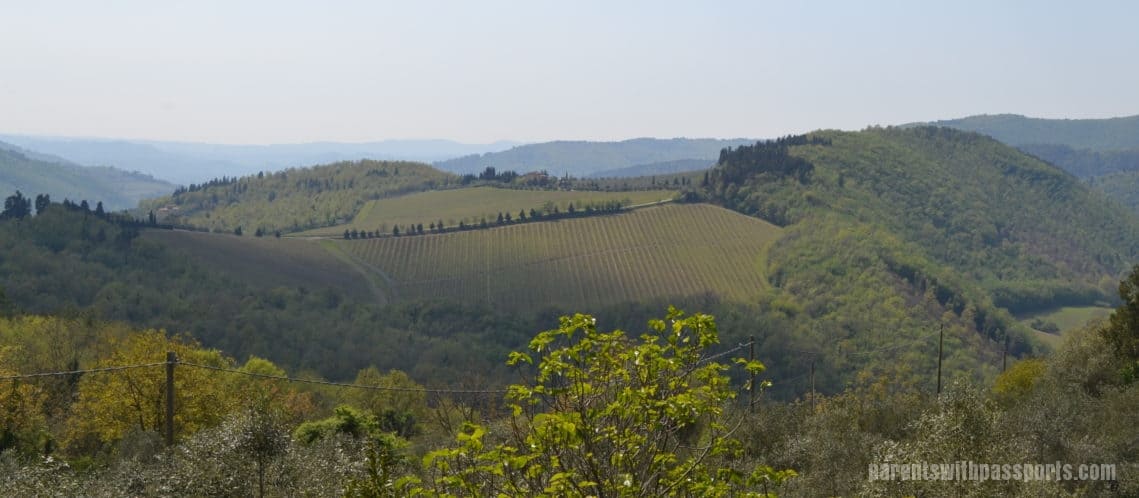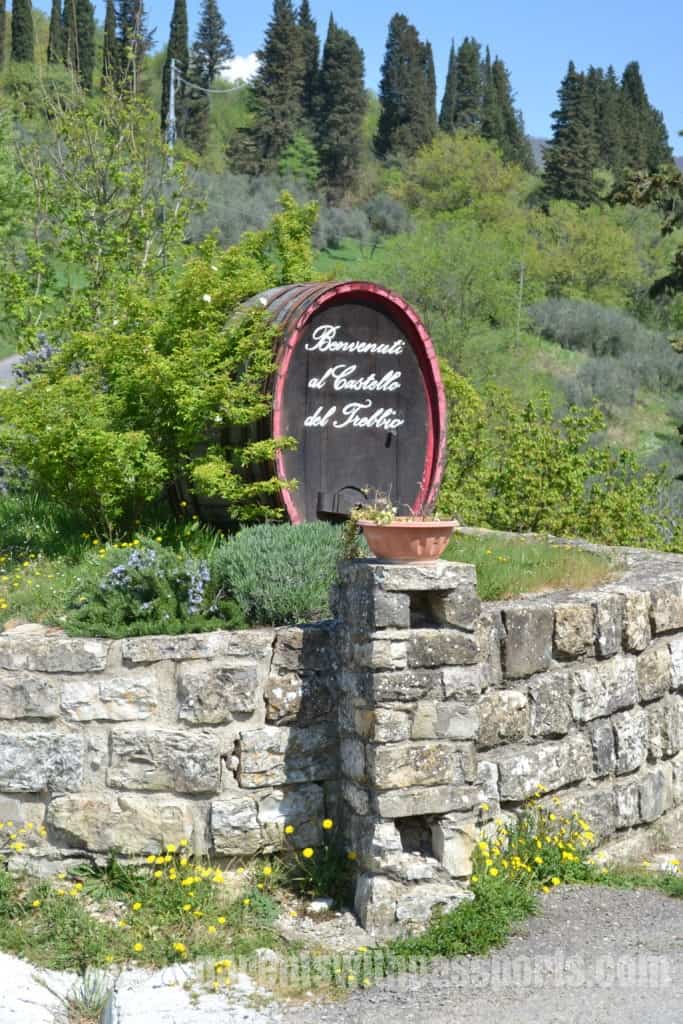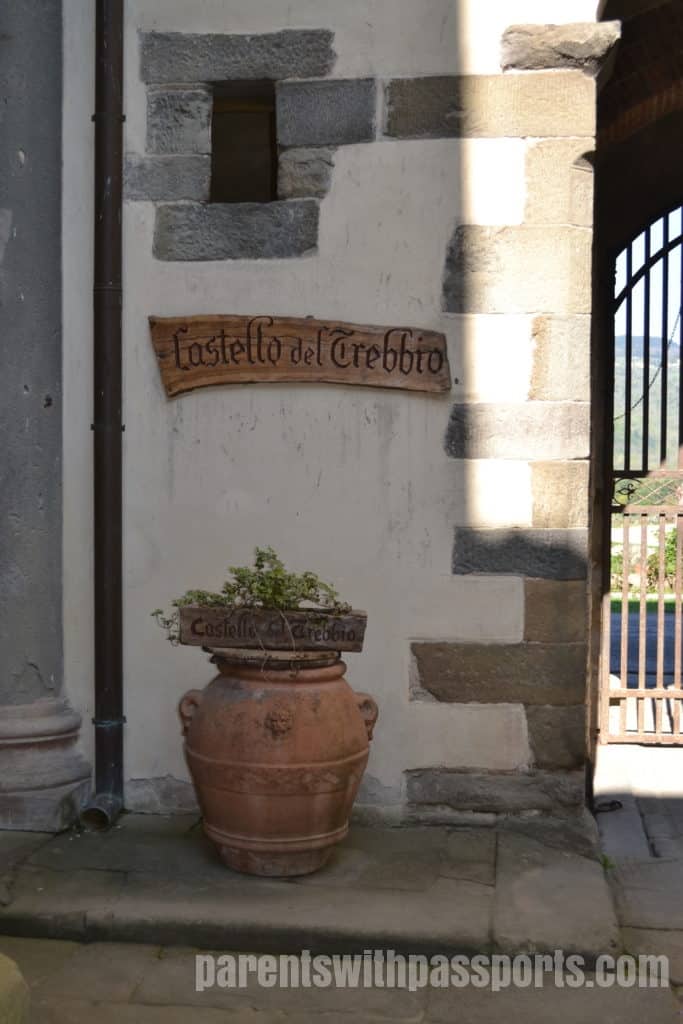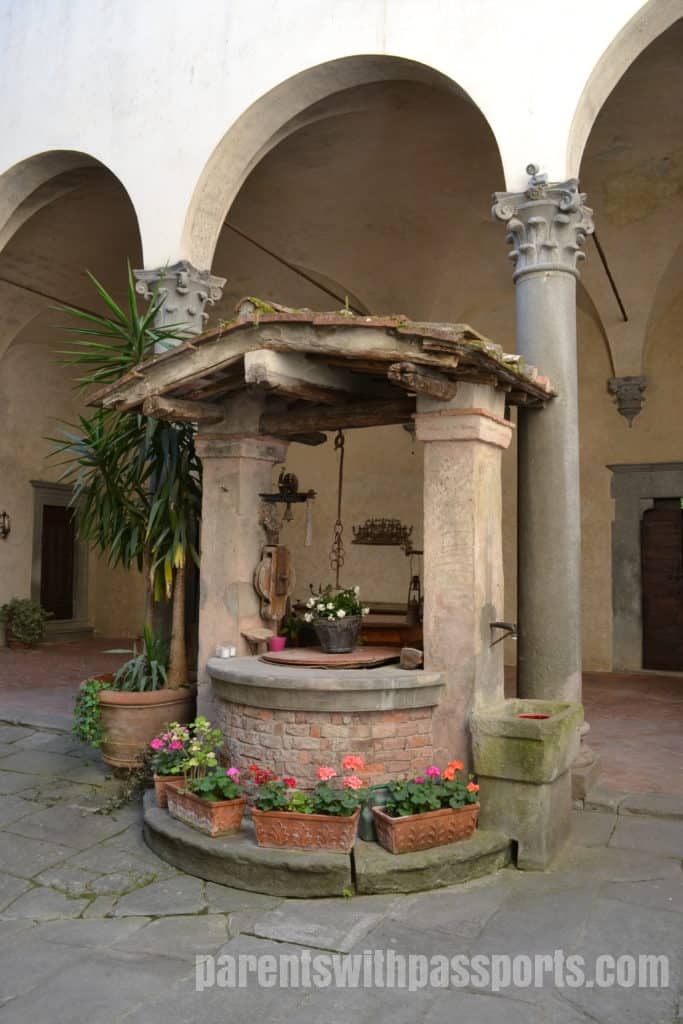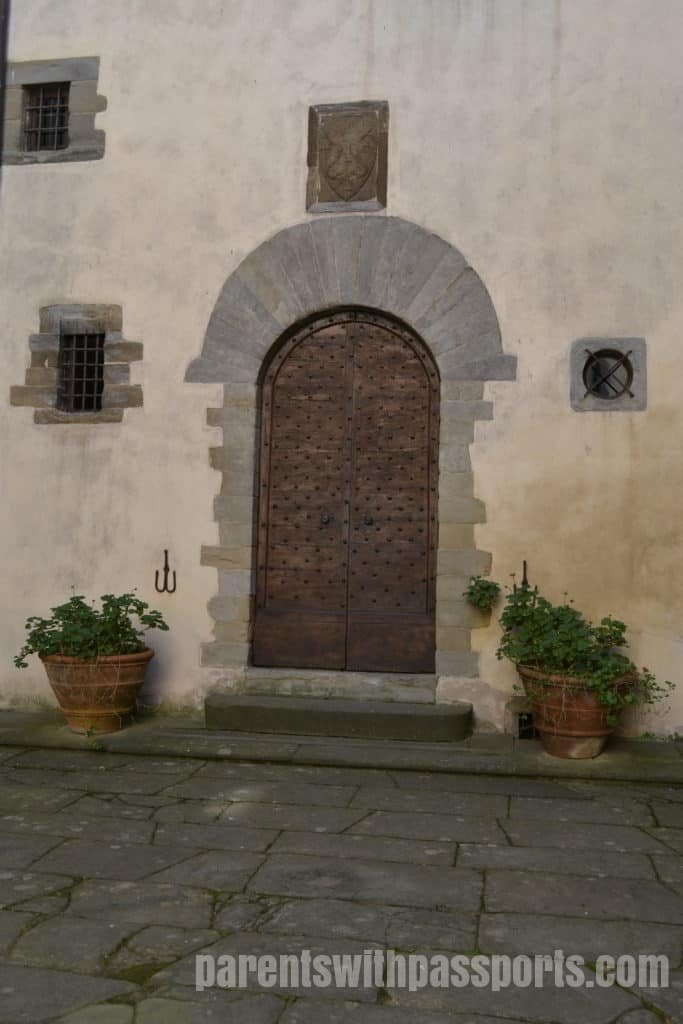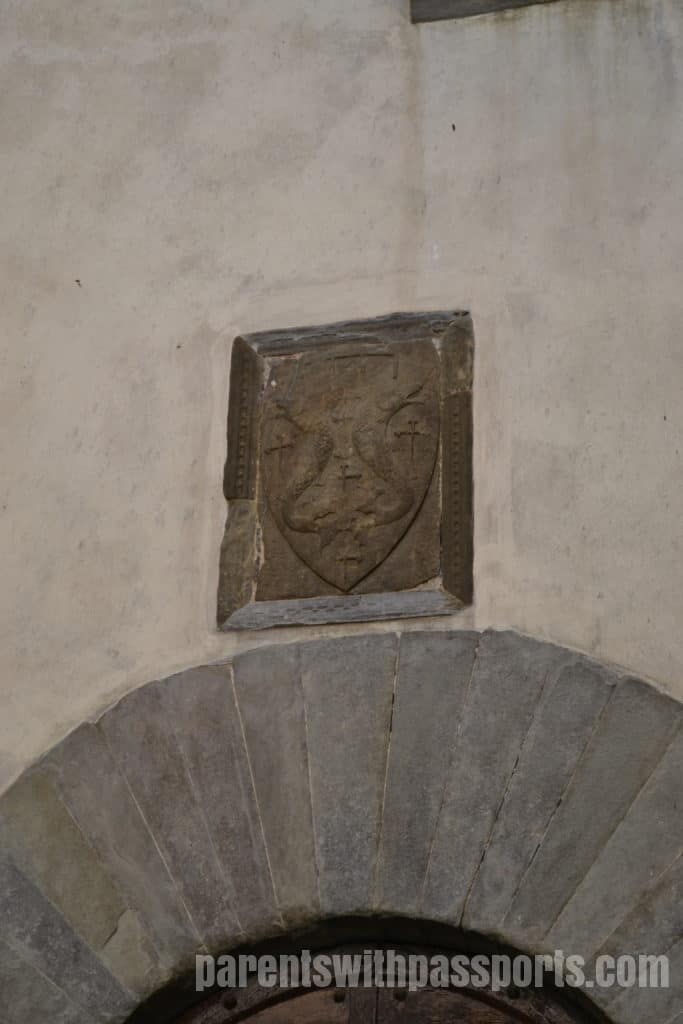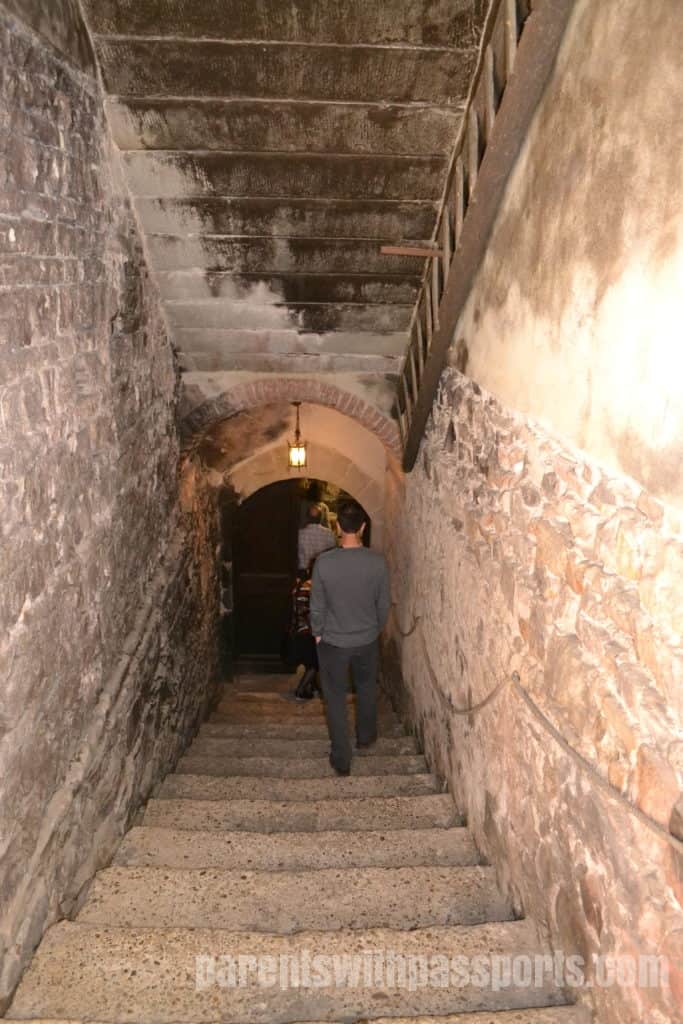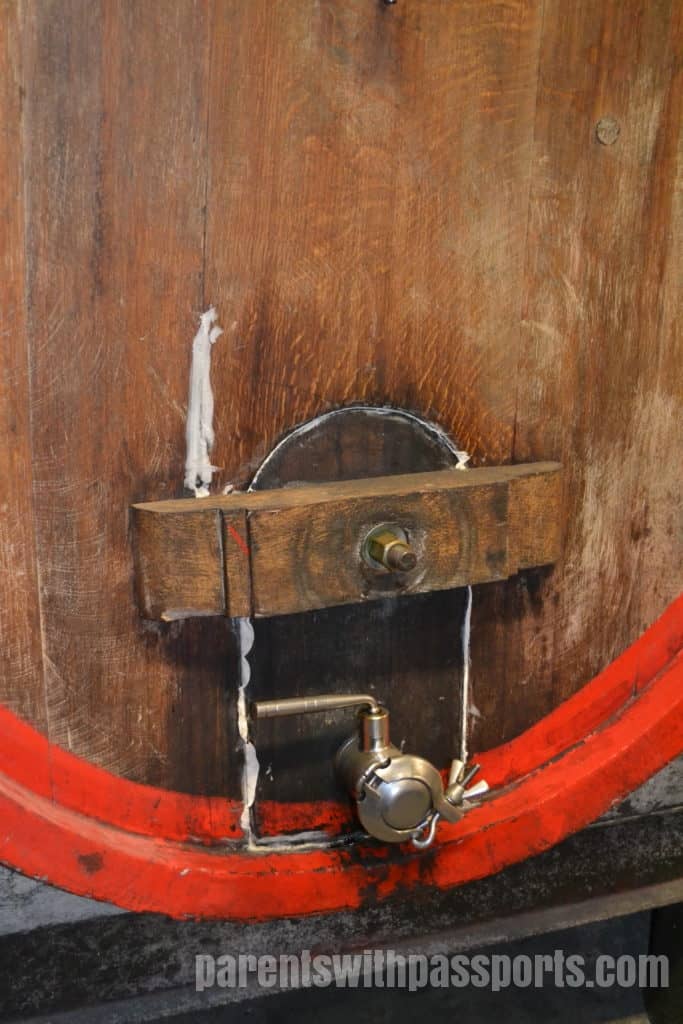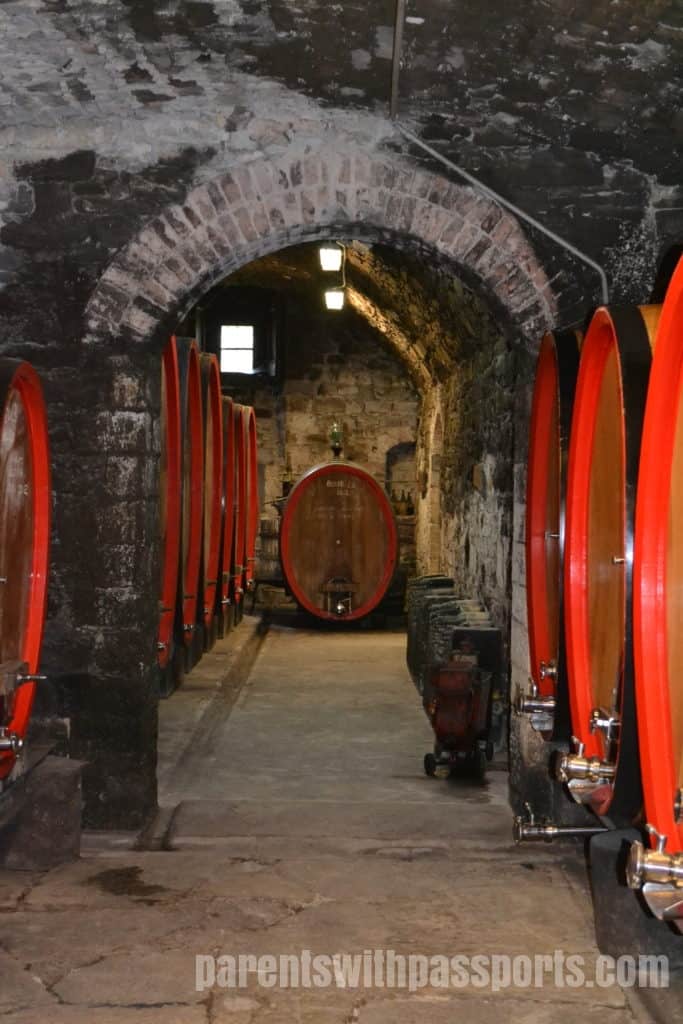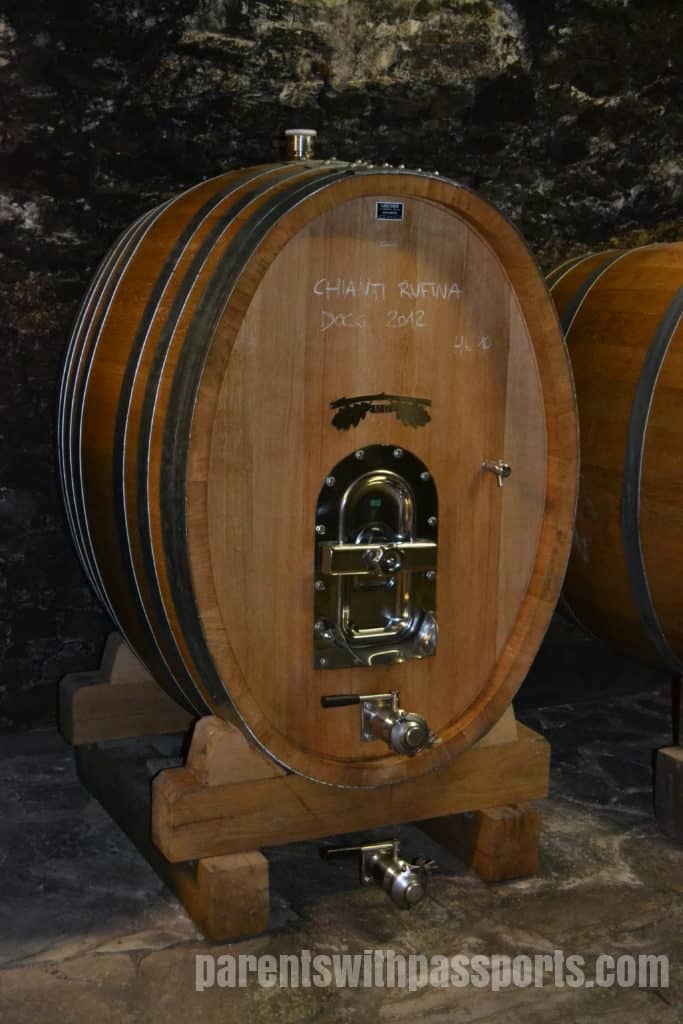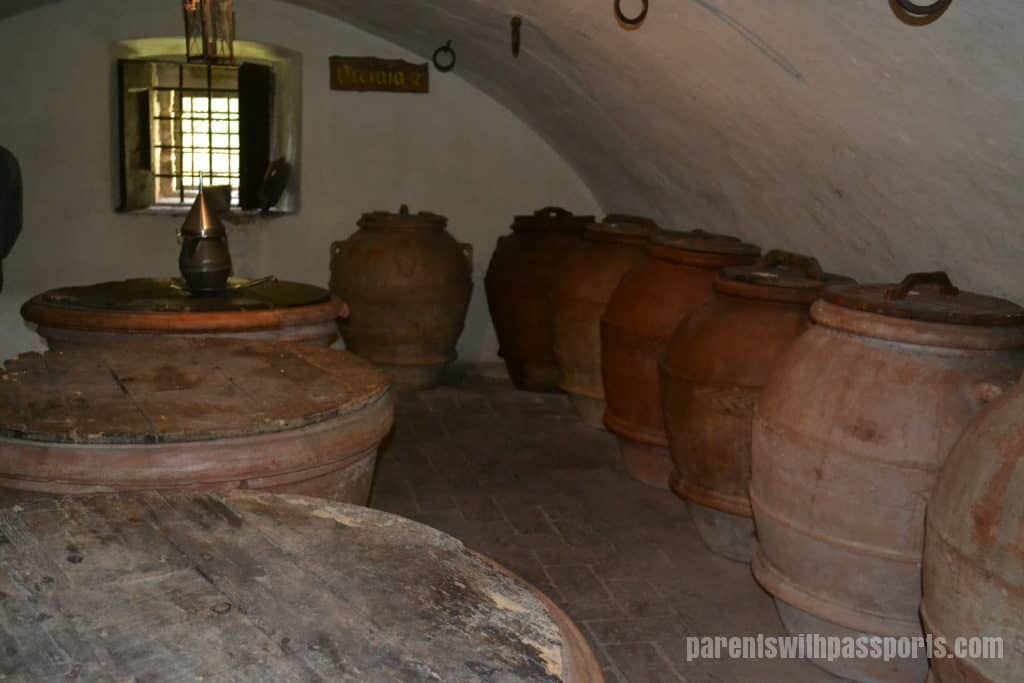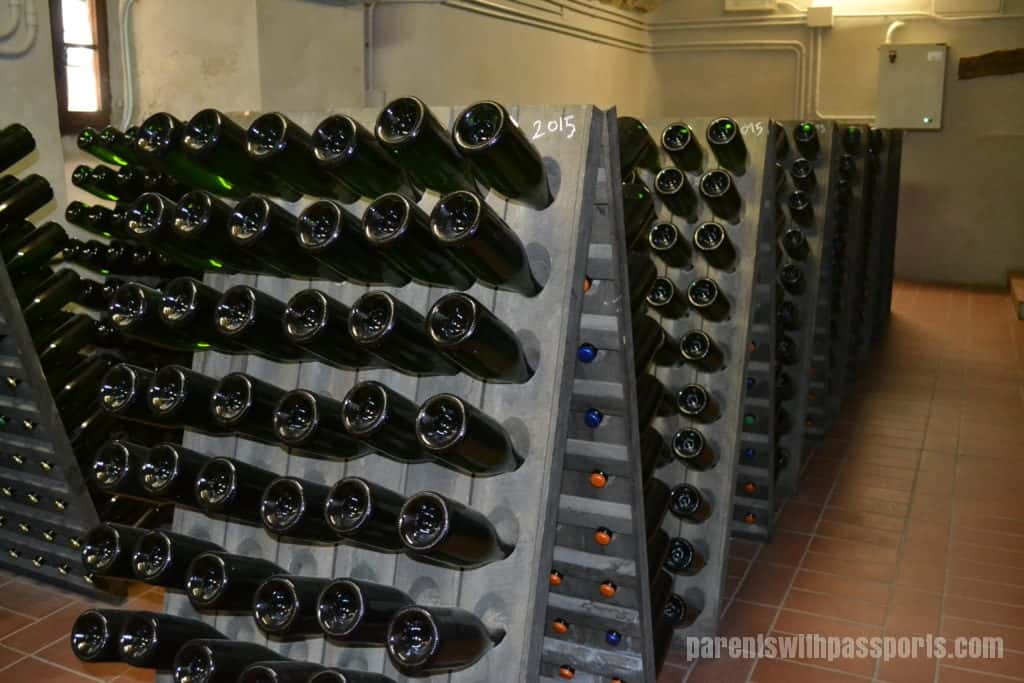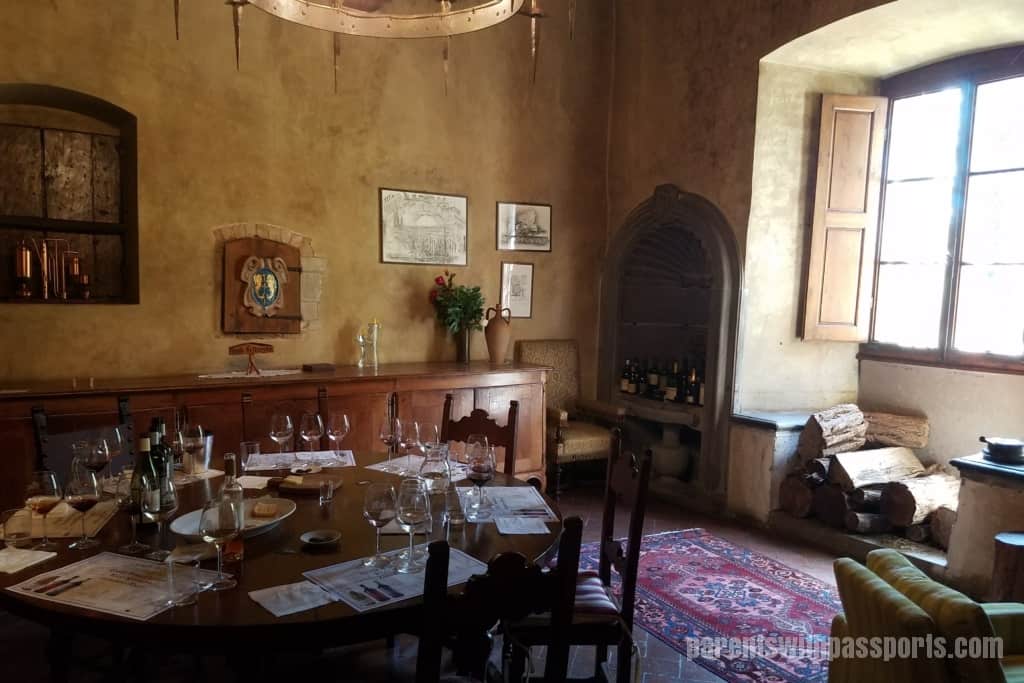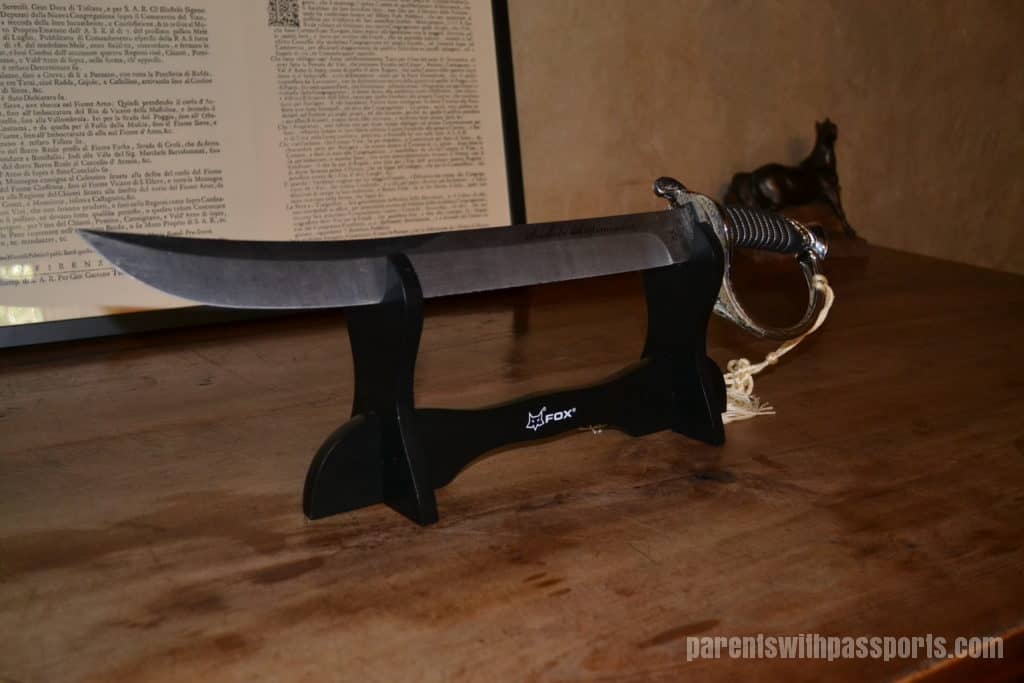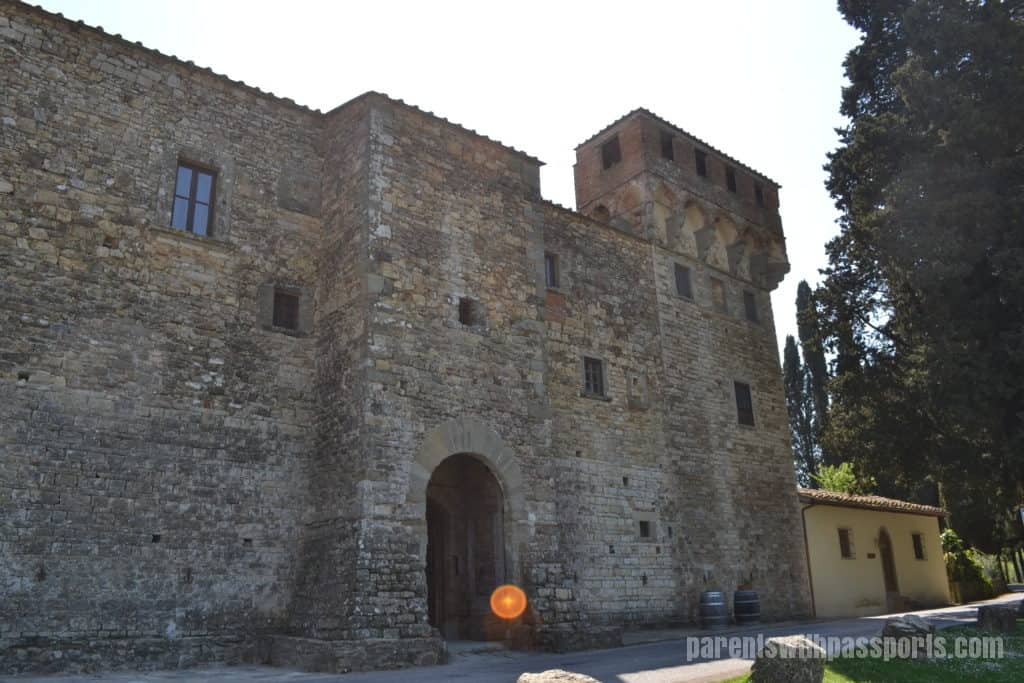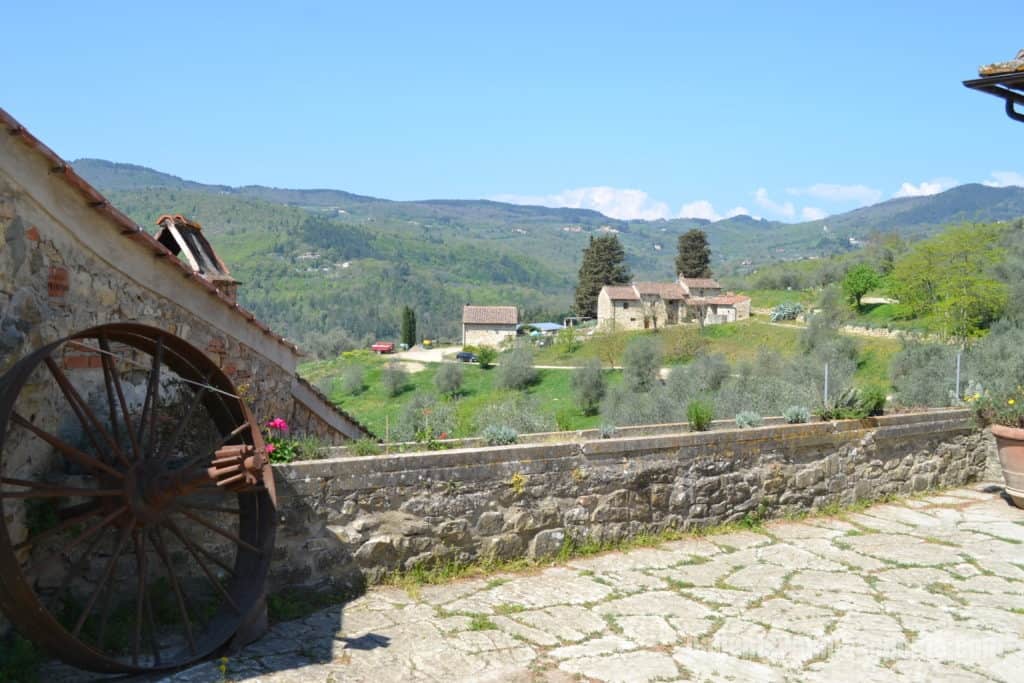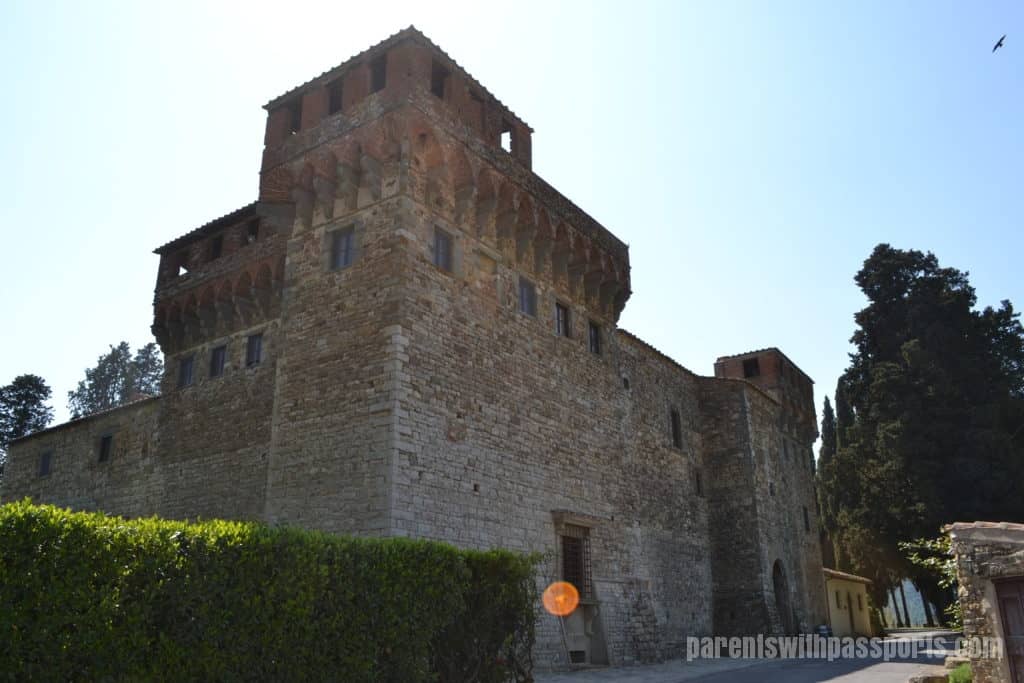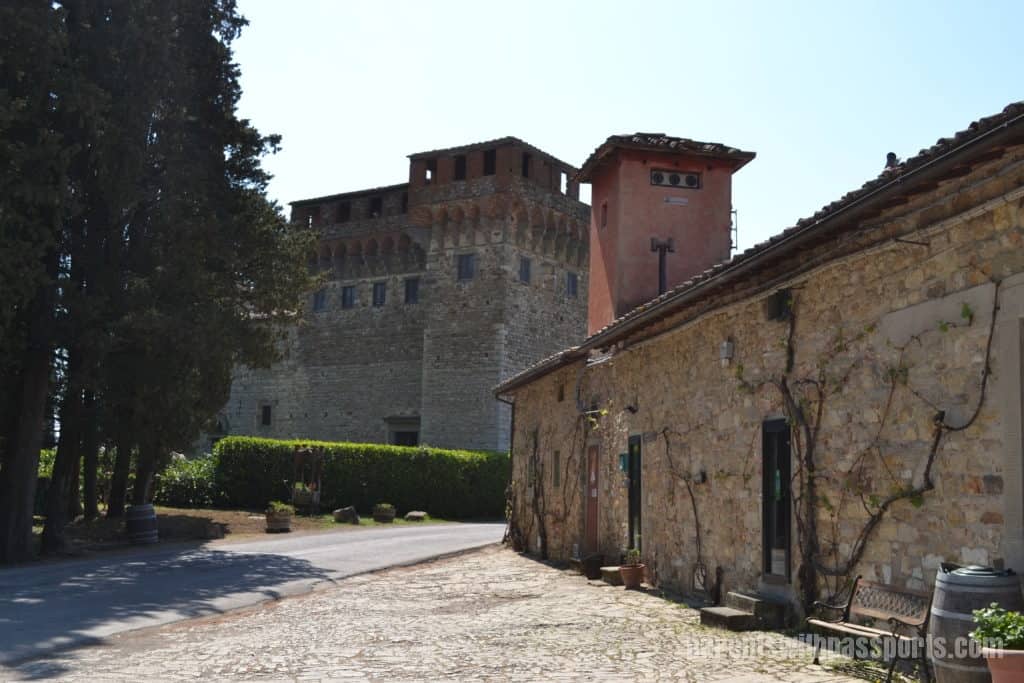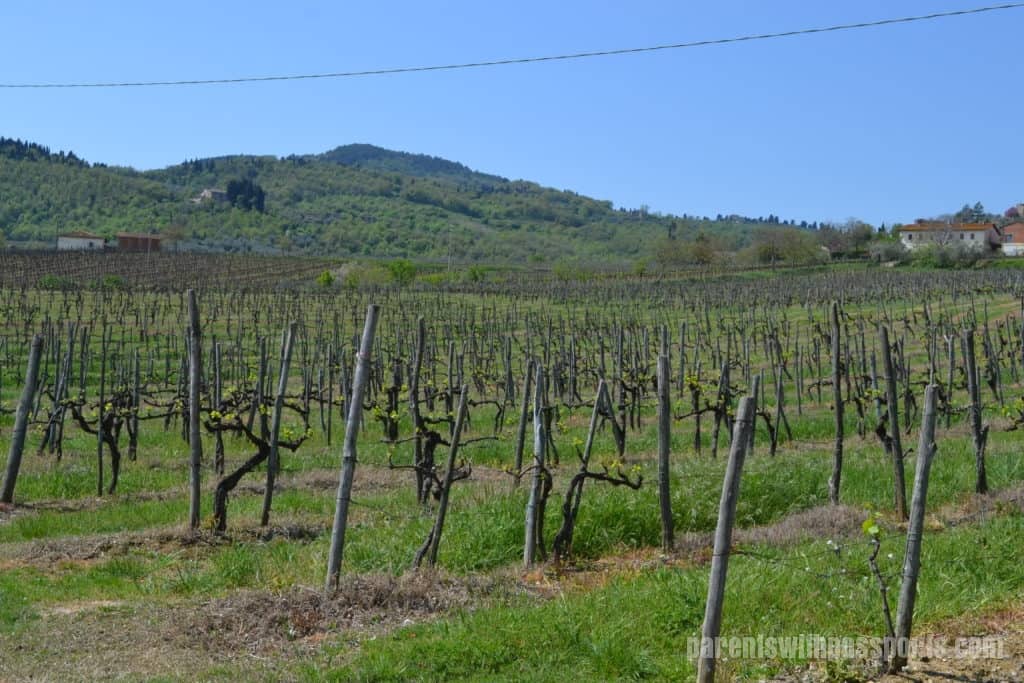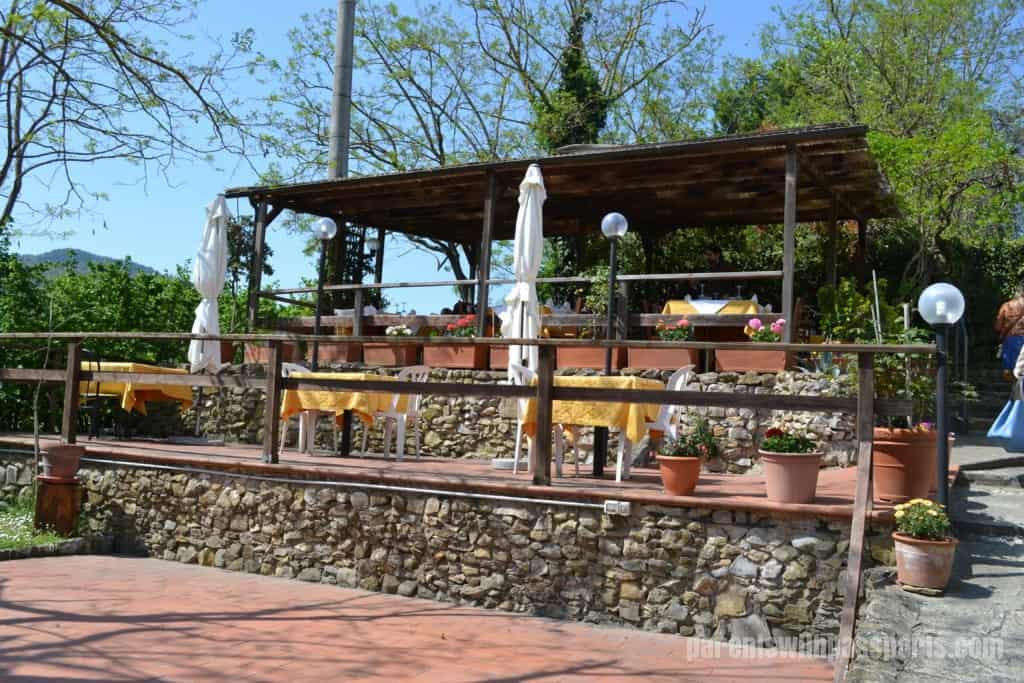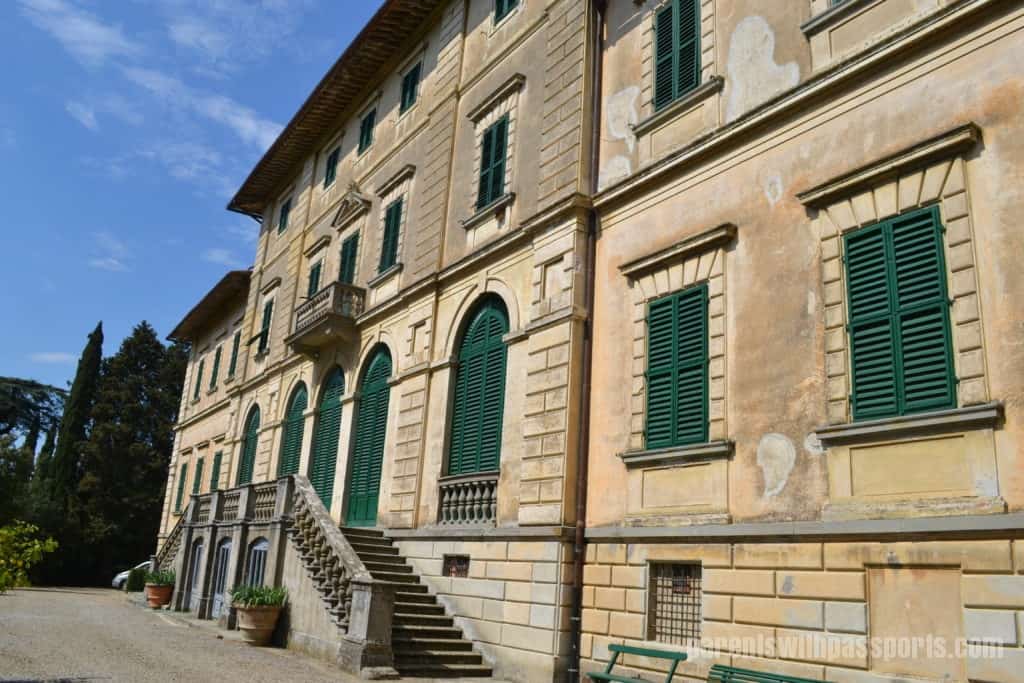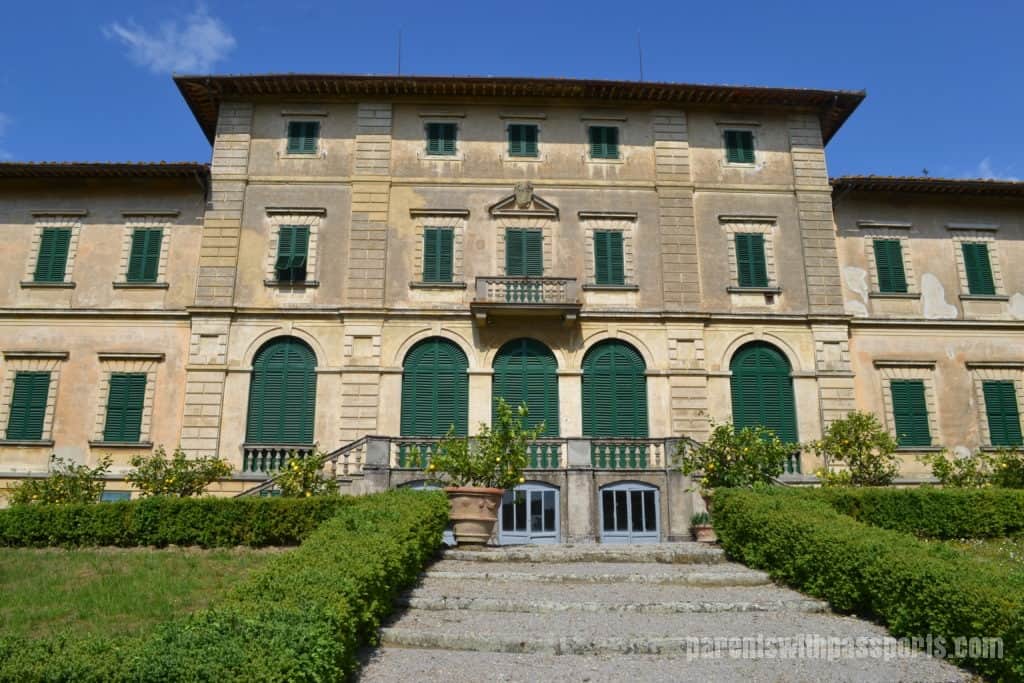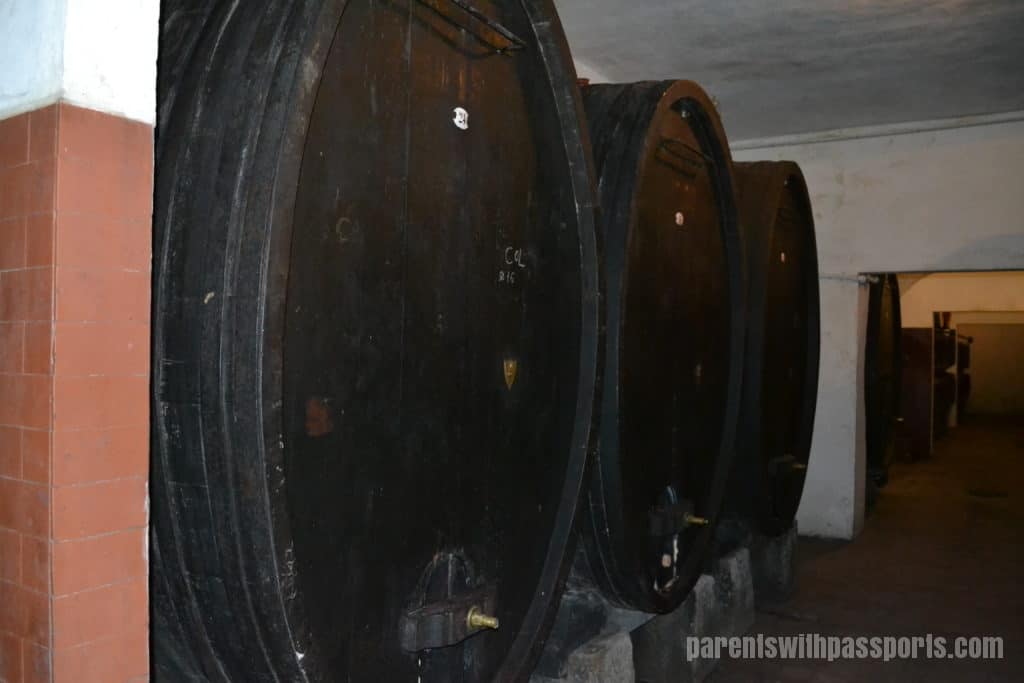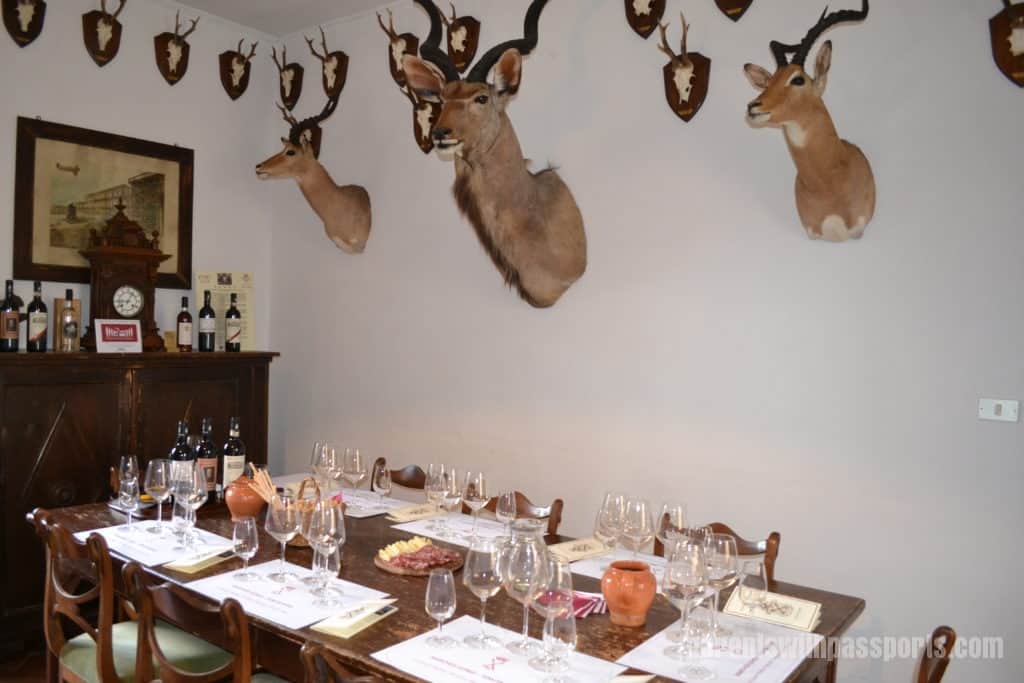We had only scheduled two tours ahead of time for this trip and a Tuscan wine tour was one of them. We booked the Castle and Chianti Wine Tour with tour company Italy and Wine. At almost $200 per person (160 Euro each), this was a bit of a splurge but we did not want to come to Italy without visiting Tuscany and touring some vineyards. The tour was a full day, lasting from 9:30 to 5:00, and included transportation, lunch, and two (generous) tastings, so while expensive, it was not a bad deal by any means. And it ended up being worth every penny.
It got off to a bit of a rocky start though. We were told to meet in Piazza Cavalleggeri in front of the National Library. As we headed in that direction, we noticed that there seemed to be a lot of people out and about. When we turned the corner into the piazza, we were inundated with people. We were at the starting line of the Florence Half Marathon! We were at a bit of a loss for how to find our tour guide in this sea of people. We stood at the top of the steps of the library and scanned the crowd for non-runners. I saw a couple nearby doing the same and asked them if they were looking for the Italy and Wine tour group and they said yes. We stuck together and eventually found our tour guide, although I still can’t exactly say how since he had no identifying information on him. He had two other people with him and I guess just had the look of an Italian winery tour guide.
Giacomo, our tour guide, walked the group of us through the crowds and down the street to a small parking lot where we all got into a van. The drive to the Chianti region of Tuscany was beautiful and we soon arrived at our first stop, Castello del Trebbio. We went into the courtyard of the castle and met a tour guide from the vineyard.
The history of the castle was fascinating. We were not expecting a story of murder and intrigue on a wine tour, but that is exactly what we got. The castle dates back to the 12th century and was built by the Pazzi family, the second most influential family in Florence. They were also enemies with the most influential family in Florence, the Medicis. Within the walls of this castle (in the room now dubbed The Conspiracy Room), the Pazzis plotted to overthrow the Medici family by killing the two leaders of the family, brothers Lorenzo and Guiliano. The plan was bold – they attacked the two brothers at High Mass in the Duomo. Guiliano was stabbed 19 times and killed. Lorenzo was wounded but escaped and survived.
The consequences to the Pazzi family for the failed coup attempt were dire. Five of the conspirators were hanged, and the family was banished from Florence. Their land and properties, including Castle del Trebbio, were confiscated. Buildings and streets that bore the family name were renamed. Interestingly, their family crest was destroyed or removed from all but one location – over the main entrance to this castle. This stone carving of the family crest was made by famous artist Donatello, so the Medici family left it untouched.
After this fascinating history lesson, we were taken down into the cellar to learn more about their wine making. This region is obviously most famous for its Chianti, which is made with at least 80% Sangiovese grapes. On the 60 hectares of vineyards on the estate, they grow Sangiovese, Merlot, Syrah, and other grape varietals. Their cellar is filled with large oak casks where the wines age. We were shocked to learn that the barrels were cleaned by hand from the inside. Someone actually climbed inside the tiny little doors to clean it, a dangerous and sometimes deadly job.
They also make olive oil and champagne on site and we saw the two storage rooms for those as well. The olives are picked, pressed, and filtered, and then stored in huge terra cotta pots. To make champagne, the wine must first lie horizontally for at least 15 months. After that period, the riddling process must be completed in order to remove the sediment that was created during the fermentation process. During this stage, the champagne is stored in a pupitre, a wooden frame drilled with 60 tapering angled holes. While stored in the pupitre, the bottles are rotated and the angle changed on a very precise schedule in order to remove the most sediment and produce a clear champagne.
After the very informative tour of the cellar, we were taken to the tasting room. The room was beautifully decorated and the table set for a tasting of four wines, as well as breads and olive oil. During the tasting, we were educated on DOCG and DOC wines. Both are guarantees given by the Italian government related to the origin of the grapes used to make the wine. DOCG is the highest level and denotes that the wine is a “Denomination of Controlled and Guaranteed Origin”. To earn the DOCG label, the wine making process must follow strict regulations (regarding types of grape, alcohol content, length of aging, etc.) and be from a specific geographic area. The government tests and then certifies such wines and only roughly 75 of them have earned this status. DOC is a lower classification, with slightly looser standards and a larger geographic area. The lowest classification is IGT, which specifies a locality of origin only.
After the generous tasting session, we had time to explore the grounds a little outside and browse in their shop. The castle and grounds were beautiful.
Before making our way to the next winery, we stopped for a wonderful Tuscan lunch at a restaurant in the countryside. We had a wonderful meal and, of course, more wine. The outdoor seating had a gorgeous view over some vineyards.
The second winery we visited was Marchesi Gondi in the Chianti Rufina wine region. Built in the early 1100s, the Gondi family purchased the Villa Bossi estate in 1592 and still owns it today. It has passed through the generations, as dictated in the will of original owner Bartolomeo Gondi. With a size of approximately 315 hectares, 18 are dedicated to growing grapes and 32 to olives. Today the estate is owned by Marchese Bernardo Gondi and his sister Donatella.
Our tour was led by Donatella and she gave a wonderful history of the estate, including the fact that it was “a little bit bombed” during World War II. We visited the cellar to see where they stored their wine and olive oil before heading for a tasting. We were slightly surprised to find the tasting room walls covered with not just deer heads but mounted wild boar skeletons. Apparently they are hunted on the grounds quite regularly. We enjoyed 5 different wines, as well as a few olive oils, and ordered several bottles of each to take with us. It was a wonderful end to a fabulous day.
With plenty of wine and food in our bellies, we headed back to Florence. All in all, this was one of my favorite experiences in Italy. We loved getting a chance to see the Tuscan countryside and enjoyed the history of the estates we visited. Giacomo was a fantastic tour guide – he was great at knowing when to provide information and when to let us sit back and enjoy the wine and conversation. He struck a perfect balance of being informative without being intrusive. We thoroughly enjoyed our day.
